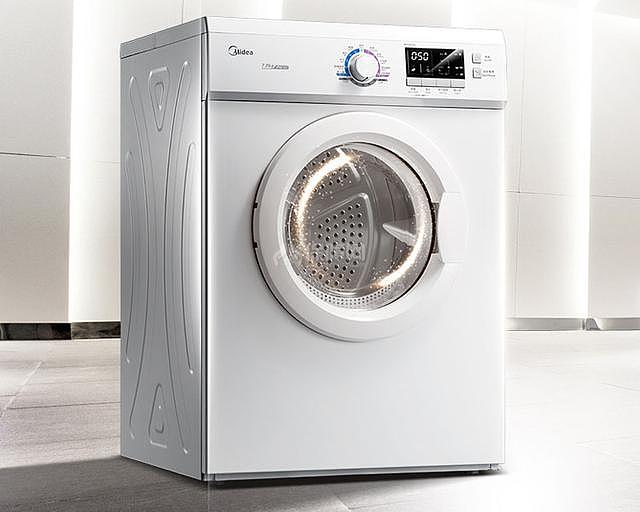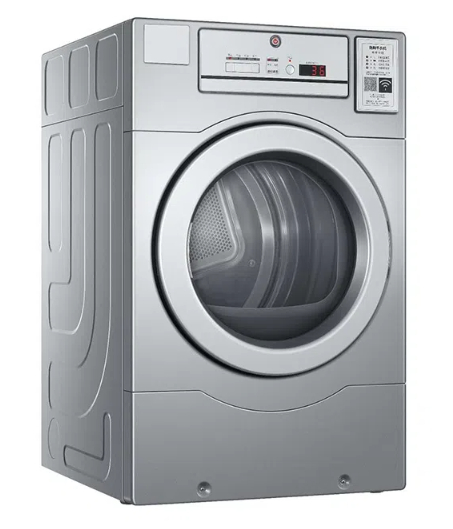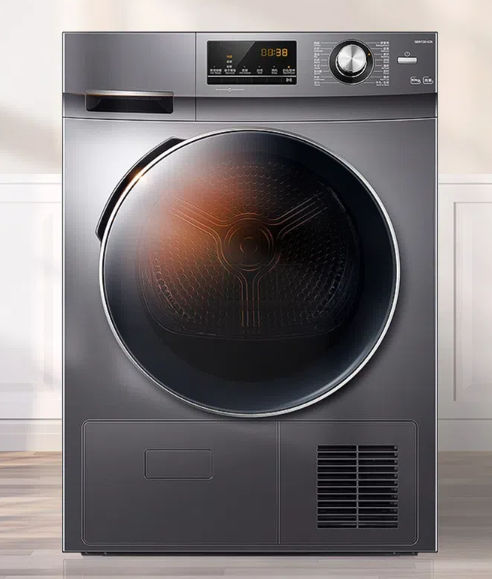
Content Menu
● Introduction to Clothes Dryers
● The Basic Principle of Clothes Dryers
● Key Components of a Clothes Dryer
>> 1. Drum
>> 2. Heating Element or Burner
>> 3. Blower or Fan
>> 4. Thermostat and Temperature Controls
>> 5. Timer and Control Panel
>> 6. Moisture Sensors
>> 7. Lint Filter
>> 8. Vent and Exhaust System
● How a Clothes Dryer Works: Step-by-Step Process
>> 1. Loading and Cycle Selection
>> 2. Heat Generation
>> 3. Air Circulation
>> 4. Tumbling Action
>> 5. Moisture Removal
>> 6. Temperature Regulation
>> 7. Moisture Sensing
>> 8. Cool Down and Cycle Completion
● Types of Dryers and Their Operation
>> 1. Vented Dryers
>> 2. Condenser Dryers
>> 3. Heat Pump Dryers
>> 4. Gas Dryers
● Energy Efficiency in Dryers
● Dryer Maintenance and Troubleshooting
>> 1. Clean the Lint Filter
>> 2. Check and Clean the Vent System
>> 3. Clean the Moisture Sensors
>> 4. Inspect the Drum Seal
>> 5. Level the Dryer
● Smart Dryer Technology
● The Future of Clothes Dryers
● Conclusion
● Frequently Asked Questions
>> Q1: How long does a typical dryer cycle take?
>> Q2: Are gas dryers more efficient than electric dryers?
>> Q3: How often should I clean my dryer's lint filter?
>> Q4: Can I use my dryer to dry items other than clothes?
>> Q5: How can I make my dryer more energy-efficient?
Introduction to Clothes Dryers
Clothes dryers have become an indispensable appliance in modern households, offering a quick and convenient way to dry laundry regardless of weather conditions. These machines have revolutionized the way we care for our clothes, saving time and effort compared to traditional line drying methods. In this comprehensive guide, we'll delve into the intricate workings of clothes dryers, exploring their components, mechanisms, and the science behind their operation.
The Basic Principle of Clothes Dryers
At its core, a clothes dryer works by circulating hot air through a tumbling drum filled with wet clothes. The combination of heat and mechanical action removes moisture from the fabrics, leaving them dry and ready to wear. While this concept seems simple, the technology behind it is quite sophisticated and has evolved significantly over the years.
Key Components of a Clothes Dryer
To understand how a dryer functions, it's essential to familiarize ourselves with its main components:
1. Drum
The drum is the large cylinder where clothes are placed for drying. It's typically made of coated steel or stainless steel and features small holes or perforations that allow hot air to circulate through the clothes.
2. Heating Element or Burner
Depending on whether the dryer is electric or gas-powered, it will have either a heating element or a gas burner. This component is responsible for generating the hot air needed to dry clothes.
3. Blower or Fan
The blower or fan circulates hot air through the drum and pushes moist air out through the vent.
4. Thermostat and Temperature Controls
These components regulate the temperature inside the dryer to ensure clothes are dried efficiently without being damaged by excessive heat.
5. Timer and Control Panel
The timer and control panel allow users to set the duration and type of drying cycle, as well as other features like temperature settings and special cycles for different fabric types.
6. Moisture Sensors
Many modern dryers are equipped with moisture sensors that detect the dampness of clothes and automatically adjust drying time to prevent over-drying.
7. Lint Filter
The lint filter captures loose fibers and debris from clothes during the drying process, preventing them from clogging the vent system.
8. Vent and Exhaust System
This system expels moist air and lint from the dryer to the outside of the home.

How a Clothes Dryer Works: Step-by-Step Process
Now that we're familiar with the key components, let's walk through the drying process step by step:
1. Loading and Cycle Selection
The process begins when you load wet clothes into the drum and select the appropriate cycle and settings on the control panel.
2. Heat Generation
When you start the cycle, the heating element or gas burner activates, warming the air inside the dryer.
3. Air Circulation
The blower or fan draws in room-temperature air and passes it over the heating element or through the gas flame. This hot air is then circulated through the tumbling drum.
4. Tumbling Action
The drum rotates, tumbling the clothes. This mechanical action helps to separate clothes, allowing hot air to circulate more effectively and evenly among the garments.
5. Moisture Removal
As hot air passes through the clothes, it causes the water in the fabrics to evaporate. The moist air is then pushed out through the exhaust system.
6. Temperature Regulation
Throughout the cycle, the thermostat monitors the temperature inside the dryer. It cycles the heating element or gas burner on and off to maintain the desired temperature and prevent overheating.
7. Moisture Sensing
In dryers equipped with moisture sensors, these devices continuously monitor the dampness of the clothes. When the clothes reach the desired dryness level, the sensors signal the control panel to end the cycle.
8. Cool Down and Cycle Completion
Many dryers include a cool-down period at the end of the cycle, where clothes are tumbled in cool air to reduce wrinkling and make them more comfortable to handle.
Types of Dryers and Their Operation
There are several types of clothes dryers available, each with its own unique operating principles:
1. Vented Dryers
The most common type of dryer, vented dryers expel moist air through a duct to the outside of the home. They are typically more affordable and efficient but require proper venting installation.
2. Condenser Dryers
These dryers don't require external venting. Instead, they use a heat exchanger to cool the moist air, causing water to condense. The water is then collected in a reservoir or pumped out through a drain hose.
3. Heat Pump Dryers
Heat pump dryers are highly energy-efficient. They use a heat pump to recirculate hot air, extracting moisture without the need for external venting. While they are more expensive upfront, they can significantly reduce energy costs over time.
4. Gas Dryers
Gas dryers use natural gas or propane to generate heat. They typically heat up faster and are more energy-efficient than electric dryers, but they require a gas line connection.

Energy Efficiency in Dryers
Energy efficiency is a crucial consideration in modern dryers. Manufacturers have implemented various technologies to reduce energy consumption:
1. Improved insulation to retain heat
2. More efficient heating elements or burners
3. Advanced moisture sensors for precise cycle termination
4. Energy-saving modes and cycles
5. ENERGY STAR certification for qualifying models
Dryer Maintenance and Troubleshooting
Regular maintenance is essential for keeping your dryer functioning efficiently and safely:
1. Clean the Lint Filter
Clean the lint filter before or after every load to maintain airflow and prevent fire hazards.
2. Check and Clean the Vent System
Regularly inspect and clean the vent system to ensure proper airflow and prevent lint buildup.
3. Clean the Moisture Sensors
Wipe the moisture sensors periodically to ensure accurate readings and prevent over-drying.
4. Inspect the Drum Seal
Check the drum seal for wear or damage to prevent heat loss and maintain efficiency.
5. Level the Dryer
Ensure the dryer is level to prevent excessive vibration and wear on components.
Smart Dryer Technology
The latest advancements in dryer technology include smart features that enhance convenience and efficiency:
1. Wi-Fi connectivity for remote monitoring and control
2. Smartphone apps for cycle customization and notifications
3. Integration with home automation systems
4. Advanced sensors for optimal fabric care
5. Self-diagnostic capabilities for easier troubleshooting
The Future of Clothes Dryers
As technology continues to evolve, we can expect to see further innovations in clothes dryer design and functionality:
- Enhanced energy efficiency and eco-friendly operation
- Improved fabric care technologies
- Integration with artificial intelligence for personalized drying cycles
- Compact and stackable designs for space-saving solutions
- Incorporation of renewable energy sources
Conclusion
Clothes dryers have come a long way since their inception, evolving into sophisticated appliances that offer convenience, efficiency, and advanced fabric care. By understanding how these machines work and following proper maintenance practices, you can ensure that your dryer serves you well for years to come, keeping your clothes fresh, dry, and ready to wear with minimal effort.

Frequently Asked Questions
Q1: How long does a typical dryer cycle take?
A1: A typical dryer cycle can take anywhere from 30 minutes to an hour, depending on the load size, fabric type, and moisture level of the clothes. Some heavy-duty cycles may take longer, while quick-dry options for small loads can be shorter.
Q2: Are gas dryers more efficient than electric dryers?
A2: Generally, gas dryers are more energy-efficient and have lower operating costs than electric dryers. However, the initial cost of gas dryers is usually higher, and they require a gas line connection. The choice between gas and electric often depends on your home's existing infrastructure and local utility costs.
Q3: How often should I clean my dryer's lint filter?
A3: You should clean your dryer's lint filter before or after every load. This simple habit helps maintain the dryer's efficiency, reduces energy consumption, and minimizes the risk of fire hazards associated with lint buildup.
Q4: Can I use my dryer to dry items other than clothes?
A4: While dryers are primarily designed for clothes, many can safely dry other items like towels, bedding, and certain stuffed toys. However, always check the care labels and your dryer's manual for specific instructions. Some items, like shoes or heavily soiled items, may require special cycles or shouldn't be machine dried at all.
Q5: How can I make my dryer more energy-efficient?
A5: To improve your dryer's energy efficiency:
- Clean the lint filter and vent system regularly
- Use the moisture sensor settings if available
- Dry full loads, but avoid overloading
- Use the appropriate heat setting for each load
- Consider using dryer balls to improve air circulation
- Perform regular maintenance to keep the dryer running optimally











